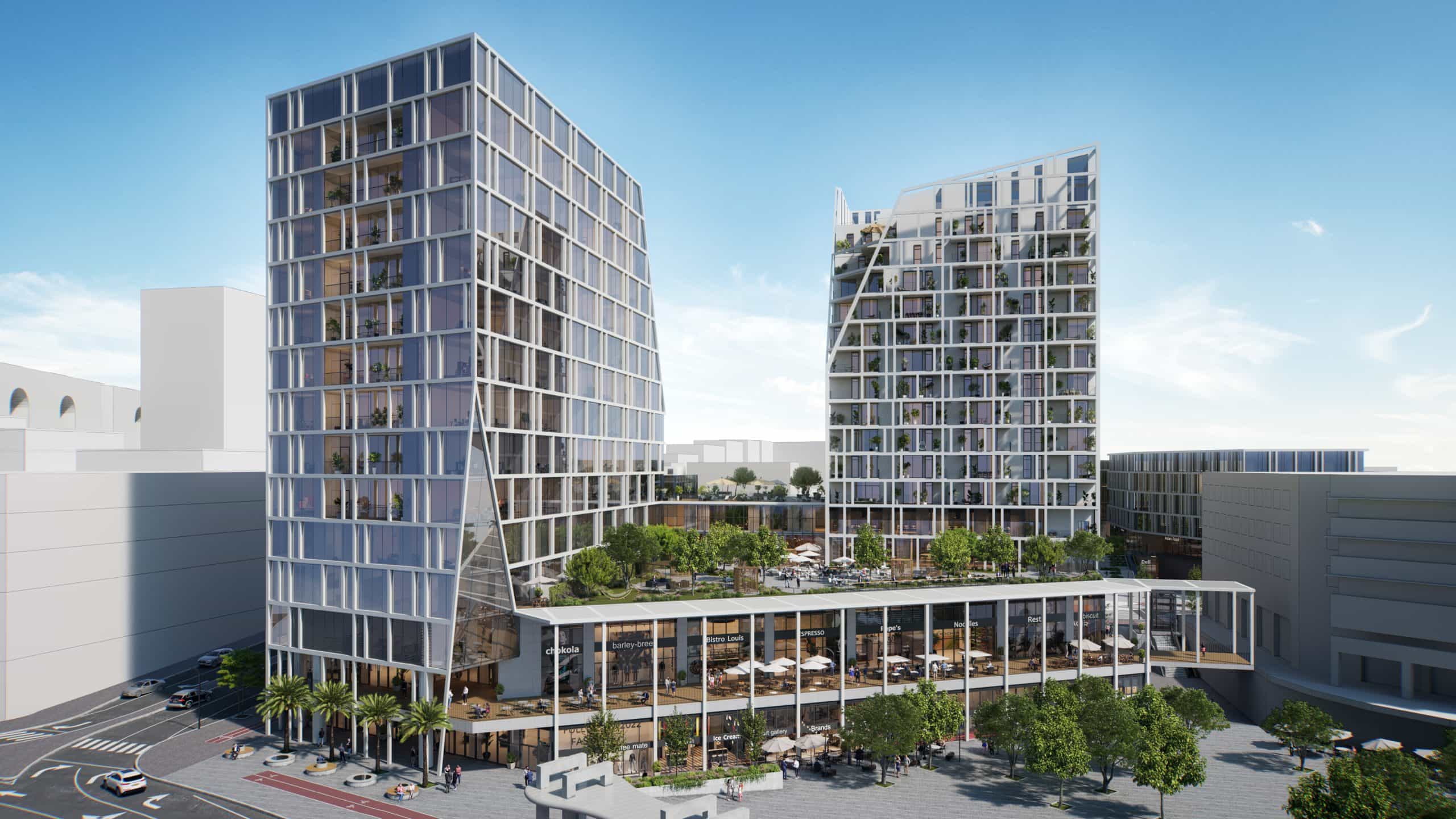Explore the essentials of curtain wall systems, from structural connections and door integration to shading, sliding solutions, and glass roofs. Ideal for façade engineers and architects.
What is a Curtain Wall Facade?
A curtain wall facade is a non-structural cladding system designed to enclose a building’s exterior while supporting only its own weight and resisting external forces such as wind and rain. Widely used in commercial buildings, office towers, and institutional facilities, curtain wall systems offer modern aesthetics, energy efficiency, and design flexibility.
A well-designed curtain wall includes various components that must be precisely coordinated and detailed. Based on international best practices and real-life project experience, these are the essential elements:
1. Mullions and Transoms
Aluminium vertical (mullions) and horizontal (transoms) profiles form the primary grid, providing support for glass, panels, or louvers. Check out the details in our website.
2. Glass & Panel Infill
High-performance double or triple glazing, aluminium composite panels, or other cladding materials fill the grid to provide thermal insulation, transparency, or shading.
3. Anchorage System
The system is fixed back to the main concrete or steel structure using brackets, anchors, and embed plates. Slab-to-facade connection is one of the most critical details.
4. Sealants & Gaskets
EPDM gaskets and silicone sealants ensure air- and water-tightness. Attention to vertical and horizontal joints is essential.
Integrated Systems within Curtain Walls
Modern curtain wall façades often integrate a variety of functional components:
1. Aluminium Door Systems
Including single or double opening doors, panic doors, sliding doors, and collapsible door systems for emergency exits. These are detailed to ensure seamless connection with the curtain wall frame.
2. Window Solutions
Side-hung, top-hung, and sliding opening windows can be integrated for ventilation. Proper drainage and pressure equalization details are essential.
3. Glass Roof Systems
Where curtain walls extend into atriums or entrance areas, glass roof canopies supported by aluminium framing provide daylight and weather protection.
4. Shading Systems
Aluminium entrance canopies or external sun-shading devices can be mounted on the façade, often directly above doors and windows, to reduce solar gain.
Why Shop Drawings & Detailed CAD Are Crucial
Every facade system must be backed by precise shop drawings and detailed CAD sections. These ensure:
• Accuracy in fabrication and installation
• Clarity for structural consultants and MEP coordination
• Speed and quality control on-site
• Custom solutions for complex junctions (corners, slab edges, doors, etc.)
Platforms like FacadeDetails.net provide a growing database of ready-to-use detail drawings and BIM resources, reducing workload for engineering teams.
Curtain Wall in BIM: The Future of Façade Engineering
Integration of curtain wall systems into software like Revit and SolidWorks improves coordination between architectural, structural, and fabrication teams. With 3D parametric modeling, clashes can be resolved early, and prefabrication becomes smoother.
Best Use Cases for Curtain Wall Systems
• Corporate Towers
• Airport Terminals
• Metro Stations
• Shopping Malls
• Public Institutions
Each project may require custom façade solutions, combining multiple system types: curtain wall, composite cladding, glass roofs, and shading devices. check the article for 5 big mistakes in shopDrawing. Facade Design
Download Ready-to-Use Curtain Wall Details
Our platform provides downloadable CAD files with complete detail sets including:
• Curtain wall with door, window, handrail
• Overhang façades
• Roof glass connection
• Side/top hung openings
• Composite panel junctions
Conclusion
The curtain wall façade is not just a design trend—it is a modern building solution offering flexibility, sustainability, and high visual impact. From door integration to glass roofing, every component demands attention to detail, performance, and aesthetics.
Need accurate, editable, and ready-to-implement curtain wall details?
Visit facadedetails.net to explore our curated drawing library.




Leave a Reply